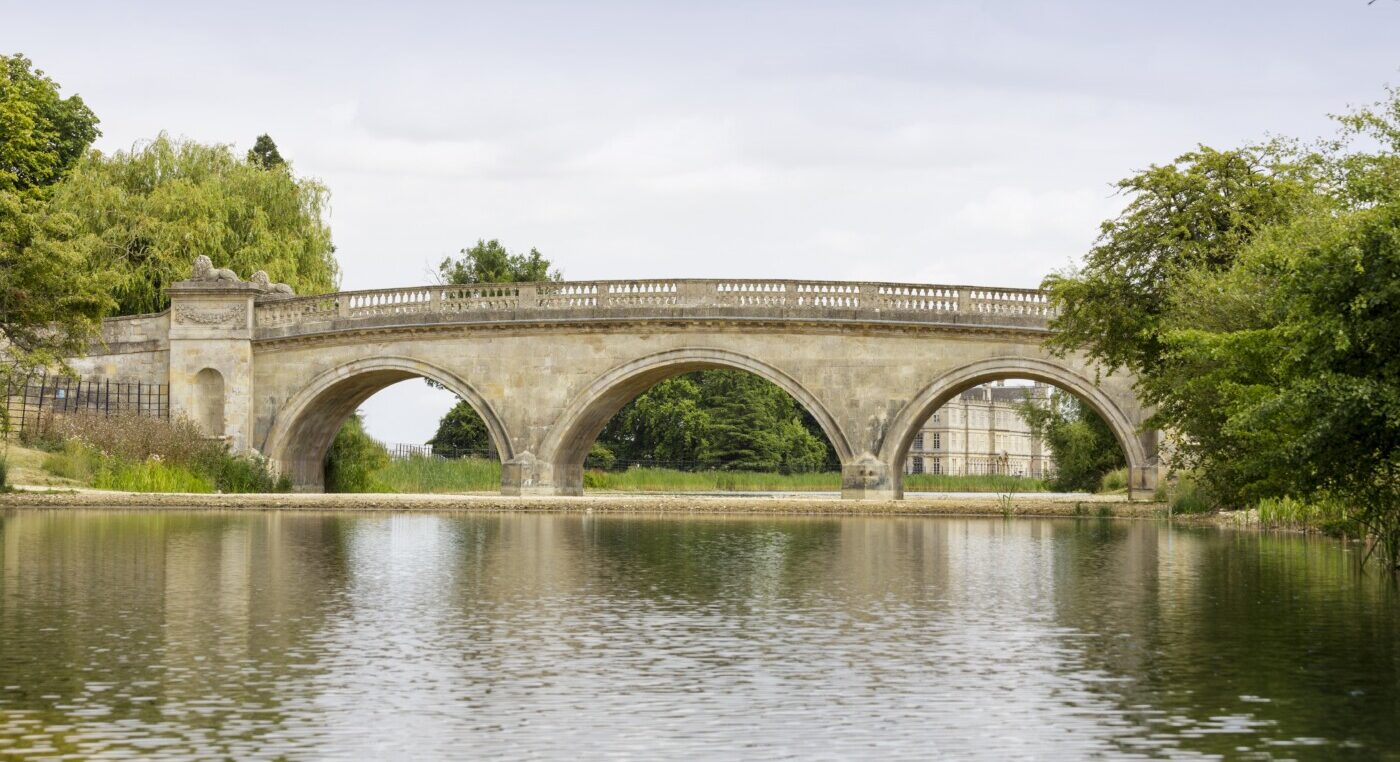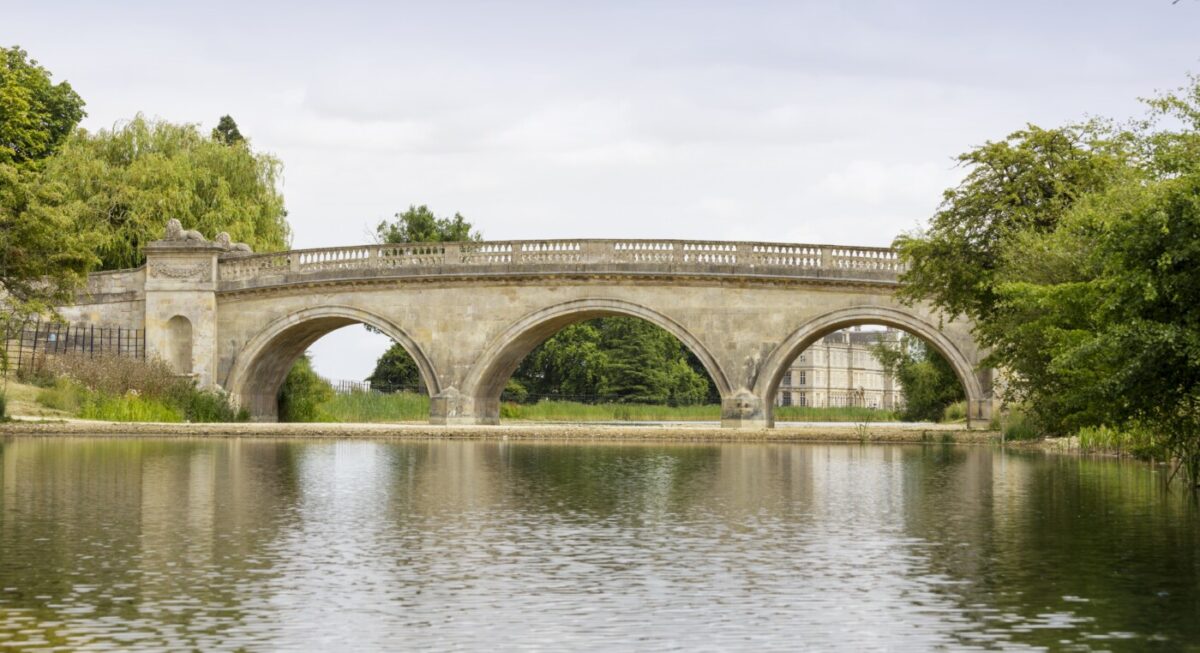The conservation project at Burghley House is a remarkable endeavour that has successfully preserved the Grade I listed Lion Bridge and ensured its longevity for the next 100+ years. The bridge, designed by renowned landscaper Lancelot ‘Capability’ Brown, is a cherished feature of the picturesque eighteenth-century house and key part of the visitor experience. It also serves as the backdrop to the iconic water-jump feature in the Land Rover Burghley Horse Trials.
The project was initiated following quadrennial inspections that identified significant risks, including water ingress through parapets and the road surface, and unsightly staining on the underside of arches. Purcell were commissioned to lead the conservation and restoration efforts. They developed a phased maintenance plan in collaboration with stakeholders, including the local authority and Historic England.
The restoration work encompassed various aspects, including the removal of the modern tarmac road surface, which was replaced with stone cobbles more in line with the bridge’s heritage. Drainage channels were reintroduced on either side of the carriageway, and the parapet stonework was repointed. The archways underwent gentle cleaning to eliminate staining, and the metal gates on either side of the bridge were conserved.
To commemorate the restoration, a time capsule was placed under a new datestone at the bridge entrance. It contains a detailed record of the restoration work, information about the bridge’s history, sketch drawings, materials from the workshop, Burghley items, photos documenting the project from inception to completion, and details of the grant.
Three Winning Facts:
- Preservation and Longevity:
The Lion Bridge restoration project at Burghley House was undertaken to ensure the preservation of this Grade I listed structure for the next 100+ years. Through a combination of innovative and traditional methodologies, the project successfully addressed the challenges of water ingress and gradual deterioration, securing the bridge’s long-term future, while not impeding on the heritage or aesthetic value of the bridge. - Harmonious Blend of Traditional and Modern Techniques:
The restoration project achieved a balance between traditional and modern construction methodologies. By incorporating stone cobbles, repointing the stonework, and conserving the metal gates, the project respected the bridge’s historical character. Simultaneously, the use of modern waterproofing techniques and innovative solutions showcased a forward-thinking approach to enhance functionality and durability. - Collaborative and Consultative Approach:
Extensive stakeholder engagement, including consultations with Historic England, played a crucial role in the project’s success. The commitment to collaboration between Purcell, expert stone masons, blacksmiths, and other stakeholders ensured that the restoration works remained faithful to the bridge’s historic fabric. The well-managed procurement strategy promoted open communication, shared responsibility, and an equitable assignment of risk, leading to successful project delivery and the dissemination of knowledge.


